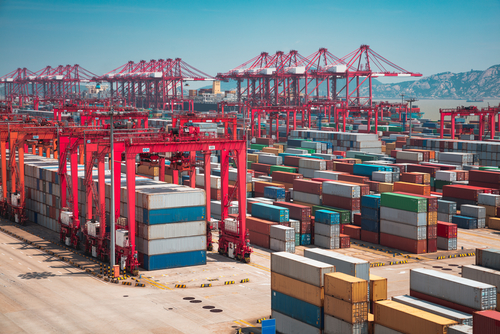The pain of Trump’s tariffs is coming home to American shoppers
Donald Trump’s trade war with China looks like it’s finally going to hit American shoppers.
The office of the US trade representative announced that the US president had directed it to start the process of putting a new 10% tariff on $200 billion worth of Chinese imports. They include (pdf) a long list of consumer goods, such as clothes, handbags, suitcases, makeup, dog collars, and human hair.
Until now, consumer goods had largely dodged the tariffs the US has recently hit China with, which focused more on industrial products such as machines and chemicals. These items are present among the new tariffs as well, but as Trump has sought to punish China for what he says are unfair trade practices, in particular its theft of American intellectual property, the back-and-forth trade attacks between the countries have led the US to expand its tariffs to new categories (paywall).
“We have been very clear and detailed regarding the specific changes China should undertake,” Robert Lighthizer, the US trade representative, said in a statement. “Rather than address our legitimate concerns, China has begun to retaliate against U.S. products.”
The outcome of the new tariffs would be higher prices on those consumer goods listed for American shoppers, something that American brands and retailers selling those items have feared for months now. In March, more than 100 companies, including Nike, Walmart, and Levi’s, urged Trump not to put new duties on products coming from China, arguing they would hurt American consumers and businesses as they hiked up prices, while having no effect on China’s attitude toward US intellectual property.
Retail industry representatives called the new tariffs a betrayal. “The President has broken his promise to bring ‘maximum pain on China, minimum pain on consumers,’ and American families are the ones being punished,” said the Retail Industry Leaders Association vice president of international trade, Hun Quach, in a statement. “Consumers, businesses and the American jobs dependent on trade, are left in the crosshairs of an escalating global trade war.”
Items such as clothes and travel goods would be particularly hard hit. The US imports the vast majority of its clothing today, and China is by far the largest producer, accounting for more than a third of the clothing imported into the US in 2016. Meanwhile, more than 84% of travel goods sold in the US come from China, according to the American Apparel and Footwear Association (AAFA). Though the tariff would only be 10%, that markup can end up multiplied at retail.
“By including items such as handbags, hats, and textiles on this additional list of products, the administration has shown that it is not concerned about targeting the American public with its ‘Trump Tax,’” Rick Helfenbein, president and CEO of the AAFA, said in a statement. “This will result in inflationary costs throughout the supply chain, ultimately paid for by American consumers.”
The AAFA asked the president to reconsider the tariffs, and said if he doesn’t, Congress should step in and use its power to regulate commerce with foreign nations. China, meanwhile, has already vowed retaliation.

